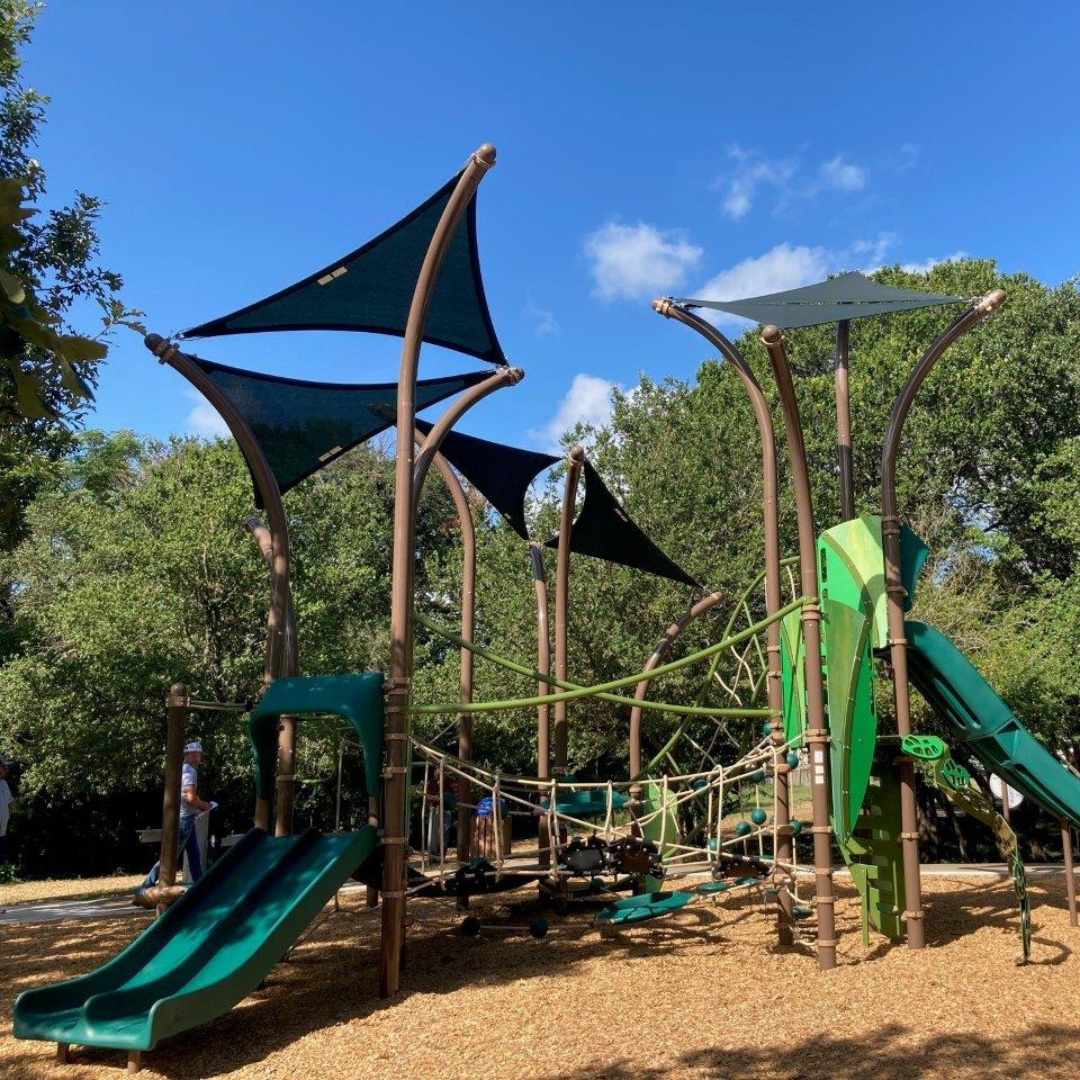Planning Your Playground
Designing and building a playground can be a fun and rewarding process, but also requires careful planning to ensure that it is safe, enjoyable, and meets the needs of the children who will be using it. Whether you’re updating an existing playground or creating a new one, take the time to bring your vision into focus—and then let the dreaming, planning and designing begin! Here are some important steps and considerations to keep in mind when designing a playground:
- Define the Purpose/Envision the play area:
Get started by defining your objectives for your playground. The more you can define your playground vision the better you can maximize the play value while minimizing the lifetime cost of ownership. What age groups do you need to plan for? Would you like to design the playspace to be inclusive or accessible? How many visitors does it need to accommodate? What colors or themes do you want to incorporate? What site amenities are needed? Answers to these questions will help guide the overall design and give your playground designer a better idea of what equipment should be incorporated into the space. - Choose a Site/Analyze the Site: Once the purpose is defined, the next step is to choose a site for the playground. Consider factors such as the size of the space and the needed fall zones, accessibility by future patrons and the construction team, and proximity to other amenities like restrooms and parking. Work with a landscape architect or your playground consultant to analyze the terrain (slope, existing vegetation, climate patterns, etc.). Be sure to note any existing utilities and soil conditions. Choose a location that is free from potential hazards, such as traffic or bodies of water, and consider the surrounding area for any other potential safety concerns. All of these considerations will affect the cost of your playground.
- Establish a Budget: Before getting too far into the design process, it's important to establish a budget. This will help determine what materials and features can be included in the playground. When establishing a budget for a playground project, it is important to consider the following factors: shipping, equipment, installation, surfacing, maintenance, and repair costs. Think about how the funding will be secured and if additional fundraising needs to be conducted to achieve your goals.
- Select Equipment: Choose equipment that is appropriate for the age range of the children who will be using the playground, as well as the budget. Consider factors such as safety, durability, and maintenance requirements. Consider separate spaces for younger and older children and the abilities or special needs of the children who will be using the playground. Are there teachers or parents that will need places to sit? Is there natural shade or does shade need to be added to the equipment list? Are there preexisting amenities, such as outdoor bathrooms or sidewalks? Asking yourself these questions may help you better define the equipment you include in and around your playground.
- Design Considerations: Think about what types of play elements you would like to include in your playground. Include a variety of play components for a wide range of activities and play opportunities. Add freestanding play events such as spinners, swings and seesaws. Incorporate educational elements such as literacy and STEM activities and signage. Consider including areas for active play, imaginative play, and quiet play. Having pockets for even different age ranges will help children find their way to the most appropriate equipment for them. Select materials that will work well with your climate, theme and user needs. You must also consider surfacing for safety and accessibility. Surfacing color can also help differentiate the spaces and create a dynamic playground. The ultimate goal is to include design considerations that create a vibrant, engaging space that fosters holistic child development and benefits the entire community.
- Consider Safety: Safety is the top priority in the design of a playground. Consider factors such as the surface material, placement of equipment, and accessibility for children with disabilities. Surface materials consist of three basic options: Poured-In-Place, Engineered Wood Fiber or Turf. Applicable safety standards and regulations will dictate equipment placement and surfacing details for things like critical fall heights or use zones. In conclusion, when planning your playground, you'll encounter a variety of surfacing options. To ensure the safety of your space, carefully consider the advantages and drawbacks of each safety surfacing system to make the best choice.
- Involve the Community: Consider involving the community in the design process. Get feedback from parents, children, and other stakeholders to ensure that the playground meets their needs and preferences.
- Plan for Maintenance: Finally, plan for ongoing maintenance of the playground. Consider factors such as cleaning, repairs, and regular inspections to ensure that the playground remains safe and enjoyable for years to come. Incorporating a regular playground maintenance program into your overall plan is crucial for ensuring safety and protecting your investment.
Overall, when designing a playground, it's important to consider the purpose, budget, equipment, layout, safety, community involvement, and maintenance. With careful planning and attention to these factors, a playground can be a fun and safe place for children to play and explore.

